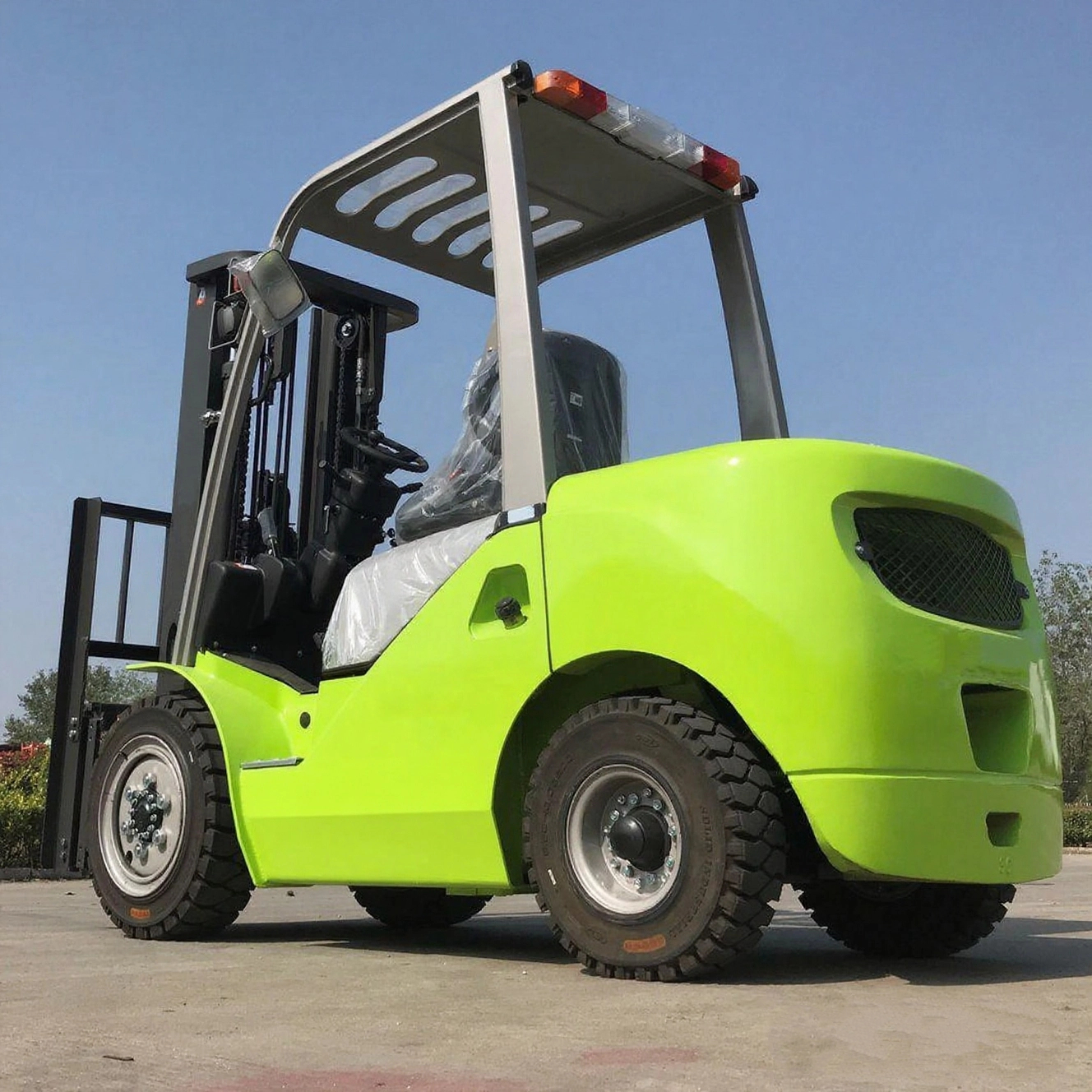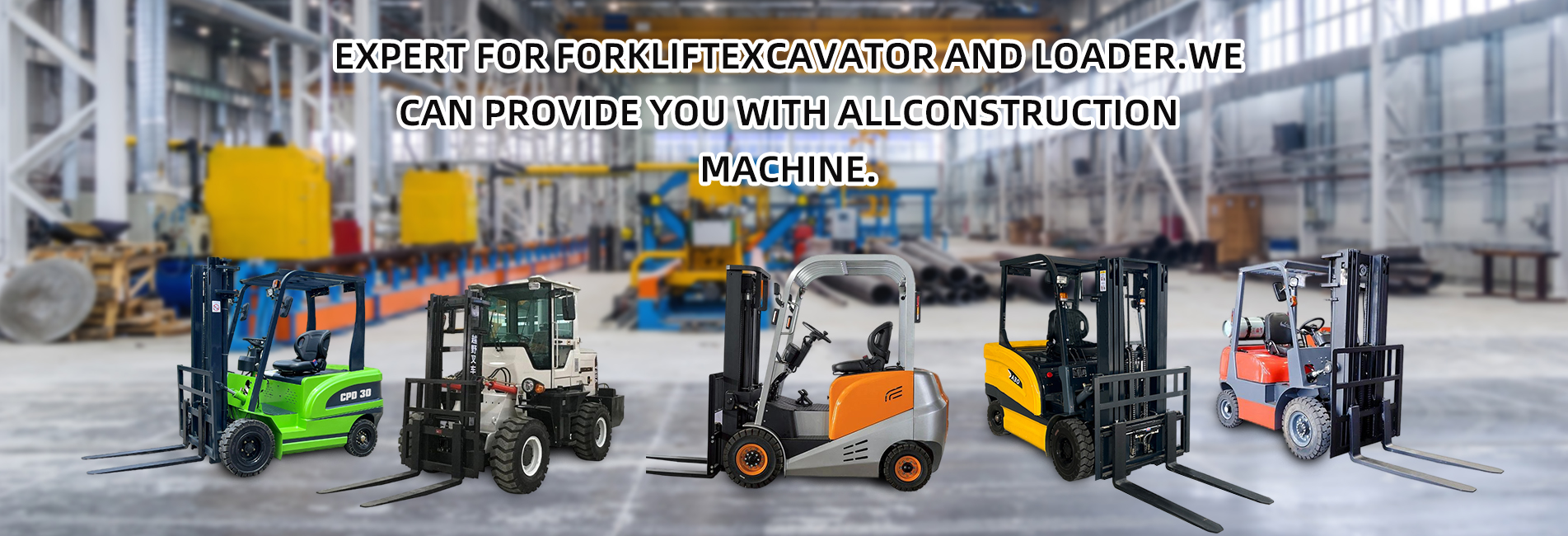Encyclopedia Introduction to Electric Forklifts
Definition and Classification
- Definition: An electric forklift refers to a type of forklift that uses electrical energy as its power source. Most electric forklifts operate on batteries, which convert chemical energy into electrical energy to provide power for the forklift's operation and work functions.
Classification: The main types include 4-directional electric forklifts, electric pallet stackers, manual-push electric lifting stackers, electric tractors, 3-wheel electric forklifts, 4-wheel counterbalanced forklifts, reach trucks (forward-reach electric forklifts), compact 3-wheel electric forklifts, ammunition counterbalanced forklifts, cold storage-specific electric forklifts, and explosion-proof electric forklifts.

Working Principle
- Power System: Electrical energy is supplied by a battery; common battery types include lead-acid batteries and lithium-ion batteries. The battery converts chemical energy into electrical energy to provide power support for all components of the forklift.
- Drive System: An electric motor converts the electrical energy from the battery into mechanical power, which drives the forklift's wheels to rotate, enabling the forklift to move forward, backward, and steer.
- Control System: Equipped with an advanced Electronic Control Unit (ECU), it receives commands input by the operator via joysticks or buttons, and converts these commands into control signals for the motor and hydraulic system, ensuring smooth and precise operation of the forklift.
- Hydraulic System: Through a hydraulic pump, electrical energy is converted into hydraulic energy, which drives hydraulic cylinders to realize movements such as lifting and tilting of the fork arms, facilitating the picking and handling of goods.
- Mechanical Structure: Includes fork arms, fork heads, tires, and chassis. Fork arms can move up and down to lift and lower goods; fork heads are used to insert under cargo pallets or shelves. Tires and the chassis provide the forklift with good stability and maneuverability, allowing it to adapt to various workplaces.
Component Structure
- Battery System: Serves as the power source of the electric forklift. The battery capacity determines the forklift's working time and endurance.
- Motor and Transmission System: The motor is a key component that converts electrical energy into mechanical energy. The transmission system is responsible for transmitting the motor's power to components such as wheels and fork arms; common transmission methods include gear transmission and chain transmission.
- Braking System: Usually adopts electronic braking or hydraulic braking methods, which can quickly stop the forklift during operation to ensure operational safety.
- Steering System: Generally composed of a steering motor, steering gear, and steering wheels. By operating the steering lever or steering wheel, the forklift's steering function is realized.
- Chassis and Body: The chassis is the basic structure of the forklift, bearing all components of the forklift; the body plays a role in protection and aesthetics.
- Control System: Acts as the "brain" of the electric forklift. It integrates various electronic components and control algorithms to achieve precise control of the forklift's functions such as speed, steering, and lifting.
Advantages
- Environmental Protection and Energy Efficiency: Electric forklifts adopt electric drive, producing no exhaust emissions during operation and causing no pollution to the environment. Additionally, electrical energy is cleaner and more efficient than fuel, meeting modern environmental protection and energy-saving requirements.
- Easy Operation: The operation and control of electric forklifts are simple. The electric steering system, acceleration control system, hydraulic control system, and braking system are all controlled by electrical signals, which greatly reduces the labor intensity of operators and improves work efficiency and accuracy.
- Low Noise: Electric forklifts generate little noise during operation, avoiding significant noise pollution to the surrounding environment. They are particularly suitable for places with high noise requirements, such as warehouses, shopping malls, and hospitals.
- Low Maintenance Costs: The structure of electric forklifts is relatively simple, without complex mechanical components such as engines and transmissions, which reduces the probability of mechanical failures. Maintenance work mainly focuses on components such as batteries, motors, and control systems, resulting in lower maintenance costs.
Application Scenarios
- Warehouse Logistics: In various types of warehouses, electric forklifts are used for handling, stacking, and storing goods. They can efficiently organize the flow of goods, improving the utilization rate of storage space and work efficiency.
- Ports and Terminals: Used for loading and unloading goods, electric forklifts can be used in conjunction with equipment such as container cranes and ships to achieve rapid loading, unloading, and transshipment of goods, enhancing the cargo handling capacity of ports.
- Factory Workshops: On factory production lines, electric forklifts are used for handling and distributing materials, transporting raw materials and semi-finished products to designated locations in a timely manner to ensure the smooth operation of production lines.
- Supermarkets and Malls: Used for tasks such as shelving, restocking, and organizing goods, electric forklifts can operate flexibly in narrow aisles, improving the efficiency of goods management in supermarkets and malls.
Key Selection Considerations
- Consider the Working Environment: Choose the appropriate type of electric forklift based on the workplace. For example, 3-wheel or reach electric forklifts are suitable for operation in narrow spaces; for outdoor operations or work on sloped sites, the power and stability of the forklift should be considered.
- Clarify Load Capacity: Based on the actual weight of the goods to be handled, select an electric forklift with a suitable rated lifting capacity to avoid overloading, ensuring safety and extending the service life of the equipment.
- Focus on Endurance: According to the working hours and frequency, select an electric forklift with a large battery capacity and strong endurance, or equip it with a backup battery to meet the needs of continuous operation.
- Understand Brand and Quality: Choose electric forklifts from well-known brands, as their product quality, performance, and after-sales service are usually more reliable. Reference the usage reviews and recommendations of other users to select products with reliable quality.


